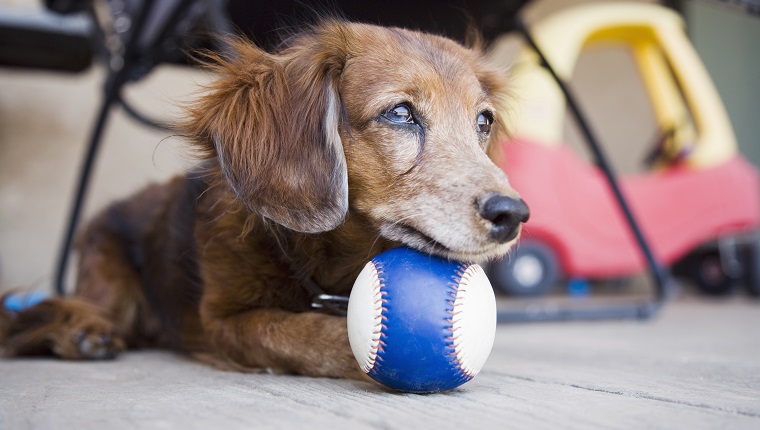As dog lovers, it’s our responsibility to provide our furry friends with the best care that we can. In order to do that, we need to understand our dogs and their needs, and we have to know how to keep them healthy and happy.
Myths about dogs can make that difficult. They can cause miscommunication between dog parents and their pups, harm canines’ health, and leave dogs in potentially dangerous situations. We have to know what’s true and what’s false, and sometimes even conventional wisdom and common sense need to be questioned.
Here are nine common myths about dogs that need to be busted.
What other myths have you heard about dogs that need to be busted? Were you surprised that any of these myths weren’t true? Let us know in the comments below!
Myths About Dogs
-
You Can't Teach An Old Dog New Tricks
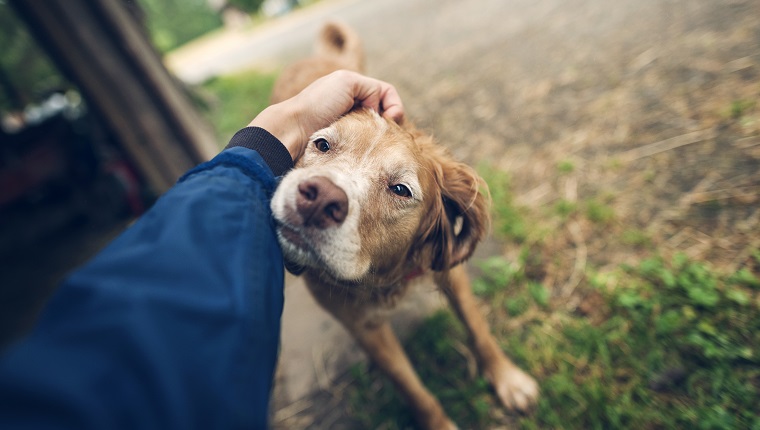
(Picture Credit: Cavan Images/Getty Images)
People often say this common phrase to explain why older humans may feel stuck in their ways and find it more difficult to learn than young people. It is also a falsehood when it comes to dogs.
Senior pups can absolutely learn new things. In fact, it's one way to keep their brains sharp and active well into old age.
Dogs often crave mental stimulation, no matter how old they are, and there are so many benefits to teaching old dogs new tricks. It's a rewarding experience for the dogs, it strengthens the bond between them and their humans, and it provides the brain with much-needed exercise.
Seniors may need a bit more patience, but they are capable of learning anything from housebreaking to advanced commands. Just be mindful of their physical needs and limitations.
-
You Need To Be Dominant To Teach Dogs

(Picture Credit: Justin Paget/Getty Images)
Dominance theory is a method of training that has been pushed by some popular dog behaviorists, especially the "Dog Whisperer," Caesar Millan.
The theory suggests that because dogs are descended from wolves, they need to operate in the same way that a wolf pack would, with a dominant "alpha" dog and the rest of the pack submitting to his will. As the trainer, you must constantly struggle with your dog for dominance to keep them in check.
There are many problems with this theory, and it has largely been debunked by modern behaviorists. It's based on flawed observations of wolves in captivity, which act differently than they do in the wild.
If you try to be dominant to your dog, you may end up making them obey you out of fear and anxiety, which can lead to more behavioral problems down the road. We absolutely need to bust this myth, as it can harm the bond that we share with our dogs.
-
Dogs Can't Tell How Long You've Been Gone
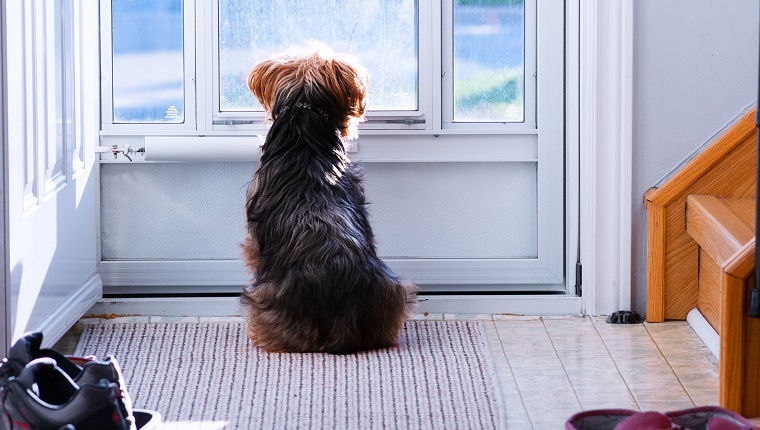
(Picture Credit: Nicholas Hylton / EyeEm/Getty Images)
This myth comes from the belief that dogs have poor episodic memories, meaning they have a harder time recalling the what, when, and where of specific events than we humans do. If they can't remember exactly when you left, they can't know how long you've been gone.
While it may be true that dogs' memories don't function the same way that humans' memories do, there is research to suggest that dogs can tell time in some ways.
Not only do their natural daily rhythms that tell them when it's time to eat, wake up, go potty, etc. help them get a sense of how much time has passed, so does their perception of daylight, the scents in the air, and other things they can physically sense.
In 2011, researchers conducted a study to see if dogs reacted differently depending on how long their humans stayed away. They found that dogs did have a different reaction when their humans left for two hours versus only a half hour, so clearly dogs have some sense of time.
Research hasn't been conducted to see how dogs react when their humans are gone for longer periods, such as days, weeks, or months, but most dog parents would say that their dogs do have some sense of how long they've been gone. Maybe scientific research will help shed some more light on dogs' perception of time in the future.
-
Dogs Should Never Eat Human Food

(Picture Credit: svetikd/Getty Images)
This is a myth that is very advantageous to dog food companies that claim that their formulated products are specifically designed to provide all the nutrients your dog needs for the rest of their lives. More and more, however, people are challenging this myth and finding that human-grade food is much more suitable for dogs and their health.
There are plenty of human foods that are just fine for dogs, including eggs and many kinds of meat, fruit, and vegetables. Instead of consuming store bought snacks, dogs can chomp on some healthy blueberries or carrots. Instead of eating kibble, they can eat a homemade recipe that is full of species-appropriate proteins and nutrients.
This myth is dangerous because kibble may not be the best option for your dog's health. It often contains filler that has no nutritional benefit, and major brands often have recalls after contamination from bacteria and chemicals.
Do some research on appropriate human foods for your dog, consult your veterinarian, and ask a canine nutritionist to assist you in formulating a real diet for your dog.
-
'Rubbing Their Nose In It' Is A Good Method For Housebreaking
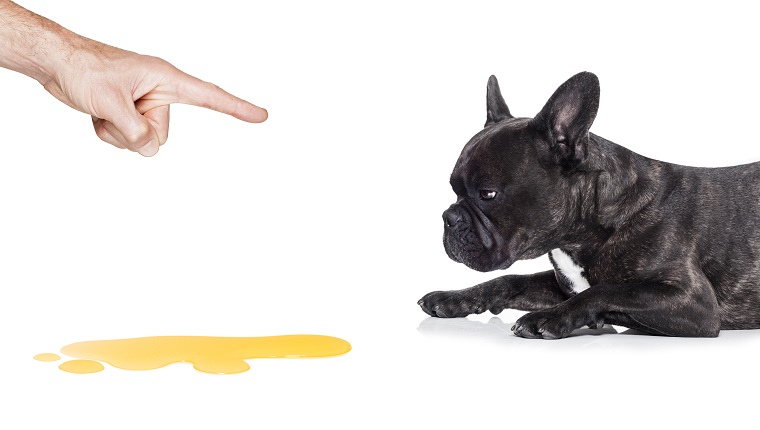
(Picture Credit: damedeeso/Getty Images)
While dogs may have some perception of time, they don't always have a grasp on cause and effect the way that humans do. This is why punishing a dog for having an accident in the house is not very effective if you don't catch them in the act.
When you come home to find an accident and rub their nose in it, your dog doesn't understand that it's the act of going potty in the house that you have a problem with. They are just as likely to think you disapprove of all poop and pee, which can make them anxious about going potty anywhere, even outside.
It can also lead to neurotic habits like eating feces, as dogs may try to hide the evidence of their accident to prevent you from punishing them. To properly housebreak your dog, you should only scold when you catch them in the act, and you should only use a sharp "no" and take them outside quickly.
Waiting any longer than a few seconds between the undesired behavior and consequence is just confusing for dogs and not particularly helpful. Believing the rub-their-nose-in-it myth can cause a major breakdown of communication that leaves dogs with lasting behavioral issues.
-
A Dry Nose Means A Dog Is Sick

(Picture Credit: Stephan Spanfelner / EyeEm/Getty Images)
While a dry nose can mean a dog is sick, it doesn't always mean that. In fact, dry noses are fairly common, and it's more likely to be nothing to worry about than it is to necessitate a vet visit.
Your dog's nose can be dry for many reasons. It can be dry because they're sleeping and haven't licked their nose in a long time. Dry, warm air can lead to a dry nose, as can allergies or exposure to plastic. Or your dog simply may need a drink of water.
It isn't healthy for a dog's nose to be dry for an extended period of time, and if you notice it, you may wish to ask your vet for advice on how to moisturize with coconut oil or other products. If the skin on your dog's nose starts cracking, you should absolutely ask your vet to determine what's wrong.
Generally, though, it's not a cause for concern unless it's accompanied by other symptoms or if the dry nose persists for a long time. This is a myth that can cause pet parents a great deal of unnecessary worry.
-
Dogs Are Completely Color Blind

(Picture Credit: James Cobb/Getty Images)
Many people believe that dogs can only see in black and white with no ability to detect colors. This is based on outdated research and has been disproved, but the range of colors dogs can see is different from humans.
Human eyes have three types of cones that allow them to detect colors, while dogs only have two. This means that dogs can mostly see shades of yellows, blues, and violets, while they cannot detect reds, greens, and oranges the way humans can.
This myth can cause misconceptions about how dogs perceive the world and may affect dog parents' decisions when it comes to training and figuring out which products to buy. Maybe you'd prefer to get your dog a yellow ball that will show up more easily for your pup in the grass than a red one.
The good news is that dogs rely on their sense of smell more than their vision or other senses, so it shouldn't matter too much to your pup what you decide.
-
Dog Body Language Always Means The Same Thing
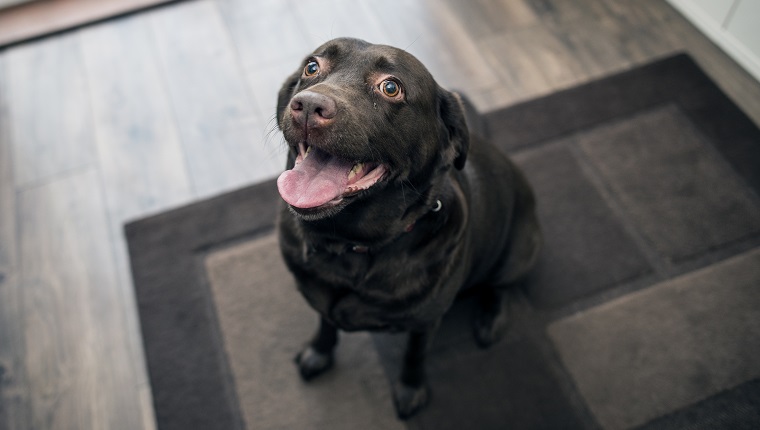
(Picture Credit: Michael Barrow Photography/Getty Images)
Some people will look at a picture of a dog on Facebook and instantly claim that they know exactly how the dog is feeling based on their body language. However, dog body language isn't always so easy to read.
You may think a dog wagging their tail is a sign that they are happy, but it really just means they are stimulated. They may be frustrated and ready to lunge or attack. A dog who shows their teeth may be angry and telling you to back off, or they may show their teeth when they are very content. Dogs who yawn may be tired or they may be anxious.
The point is that you can't always tell what a dog is thinking based on their body language. You also have to be aware of context, be familiar with the dog, and understand the other ways in which dogs communicate.
This myth can lead to a lot of misunderstandings, anxiety, and even bites if people aren't careful.
-
Shaving Or Wetting A Dog's Fur Will Keep Them Cool

(Picture Credit: Juan Lin / EyeEm/Getty Images)
When the weather heats up, common sense would tell you that you can keep your dog cool by getting rid of some of that heavy fur and sprinkling some water on them. Common sense is wrong in this case, and it's potentially dangerous.
As much as a dog's fur coat is meant to keep them warm, it also helps keep them cool when it's hot and prevents sunburns.
Most experts say that dogs with especially thick coats may need a trim, but they shouldn't ever need a completely shave, and short-haired dogs probably don't need you to trim them at all. They recommend leaving at least an inch of fur.
As for getting dogs wet, it will provide some temporary relief, but their coats can trap water, which can create steam next to their skin and only heat them up more. If you want to cool off your dog, apply cool -- not cold -- water to their exposed skin. This includes the armpits, paws, inner thighs, and places where there's no fur cover.
If you must wet your dog's fur, you'll need to continuously refresh the water so that it stays cool and doesn't create steam. If you're using a towel, you can trap even more steam if you don't keep it cool, and heat can transfer very quickly.
Get your dog indoors and to a cool place as soon as possible if they show signs of heatstroke or dehydration and give them plenty of water to drink. Don't make the mistake of making your dog warmer when you're trying to keep them cool.
